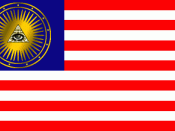Story of Gilead: Fact or Fiction
In the year 2003, many people can not comprehend the historical implications of women's rights in the United States. It has been over a generation since women's movements toward equality tore down the barriers between men and women in the United States. Few people actually remember that up until 1919, women were not even allowed to vote in an election. Many people who live in the United States, might read The Handmaid's Tale, and think that there is no possibility of a society which assumes absolute power over women's bodies, in this day and age. The fictional society of Gilead dictates that women cannot vote, work, read, or do anything else that might allow them to become insubordinate or independent and thereby undermine their husbands or the state. The society that Gilead portrays can be considered a mirror to the way of life in select Middle Eastern countries such as Afghanistan.
The author (Margaret Atwood) has created a novel, which can be considered a fictional interpretation to the harshness of society in Afghanistan toward women.
From the opening chapters of The Handmaid's Tale we catch a glimpse into the overwhelmingly harsh society that is Gilead. The narrator Offred, explains that she is held at a guarded facility, where the violation of basic human rights would be an understatement. In an attempt to combat under population, women are reduced to either the bearers of children, or the keepers of the bearers of children (including maids, etc). The ability to speak, look into other peoples eyes, read, and other abilities are subject to repression. The women are ultimately reprogrammed into believing they are objects, which are to be used as baby machines for their appointed men masters. Even their names are changed so...


